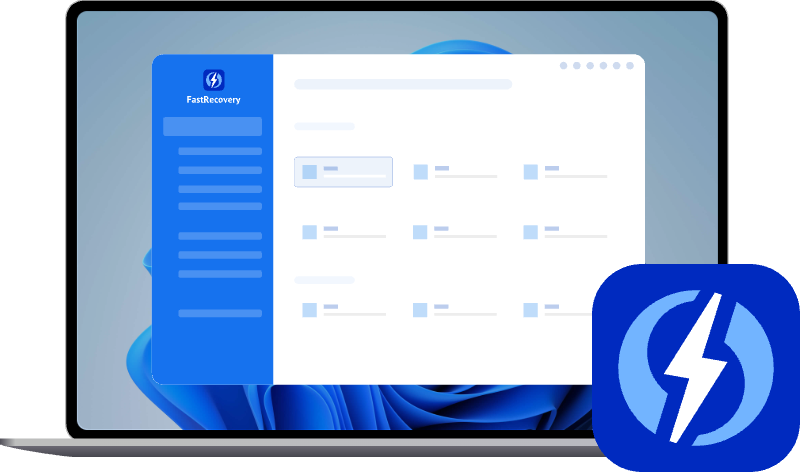How to Recover Files from External Hard Drive Windows 10 & Mac?
Need to recover files from external hard drive Windows 10? Methods are ready for Windows & Mac users to perform external hard drive data recovery.
Can you recover files from external hard drive?
An external hard drive, a kind of portable storage device, is usually used as a backup drive, which can store valuable personal files, photos, videos, etc.
Data loss on an external hard drive is actually not an issue we will meet seldom, due to its fragility and delicate design.
Some users may mistakenly remove a partition and need to recover deleted volume on external hard drive; some might lose essential files.
Have an old external hard drive I'm trying to recover old deleted files from (mainly a range of image and video files I love. Happy to spend money to get as many of these files back as possible, but want to spend wisely.
- Question from Reddit
Are you stuck in the same plight and also wondering how to recover files from external hard drive Windows 10? Don’t be upset!
No matter whether you are a Windows user or a Mac user, you can find some feasible ways to get your data back. But before that, let us move on to the causes of data loss in external hard disks.
Why did my files disappear from my external hard drive?
Everyone understands how useful an external hard drive is. With its good portability, it can be taken with users when they go outside or on business trips.
However, it is rather delicate and must be handled with caution. Its interior structure can easily be destroyed or damaged if not handled with care.
Some prevalent causes of data loss on an external hard disk are prepared for you to check if you have met a similar one.
- A power outage or power surge causes damage to the hard disk.
- Accidentally deleting or unintentionally formatting.
- Virus attacks or malware can hide/delete/encrypt your files. One of the prominent symptoms is the file automatically deleting itself.
- Suddenly unplugging the external hard drive causes data loss.
- Disk formatting. Formatting wipes all content on the hard disk. If so, you need to recover accidentally formatted hard drive.
The reasons for users’ external hard disk issues and the brands of external storage devices may be different, but the goals are the same—to perform external hard disk data recovery.
In the next part, we will teach you how to recover data from an external hard drive in Windows & Mac.
How to recover files from external hard drive Windows 10?
Windows users can utilize some inbuilt tools and third-party tools to realize external hard drive data recovery.
Method 1. Recover data from an external hard drive via Windows File Recovery
Windows File Recovery is an official tool developed by Microsoft, which is quite useful for users who have command-related expertise. It can recover deleted office/media/compressed files from internal/external hard drives.
Unfortunately, it is a command-line application without a GUI, which is pretty unfriendly for ordinary users. If you feel it is challenging, refer to the guide to learn how to use Windows File Recovery or check the next method.
You need to check out your File System first. Go to This PC > right-click on the external drive that contains the deleted files> click Properties.
In addition, you need to use recovery mode and switches to get back your files. To decide which mode to use, refer to this table.
| File system | Scenarios | mode |
| NTFS | Deleted recently | Regular |
| NTFS | Deleted for a while | Extensive |
| NTFS | Formatted disk | Extensive |
| NTFS | Corrupted disk | Extensive |
| FAT and exFAT | Any | Extensive |
switches are used to filter the scanning range, thus can save the scanning time.
| Switches | Meaning | Supported mode(s) |
| /n | Filter the scan range: scans for a specific file with its file name/path/type, etc. | All |
| /y: | Recover specific extension groups. | Signature |
| /k | Recovers system files. | NTFS Segment |
| /u | Recovers undeleted files, for example, from the Recycle Bin. | NTFS Segment |
- Notes:✎...
- This tool is available on PCs running Windows 10 and later.
- The "source-drive" refers to where you have deleted files from.
- The "destination-drive" refers to the place you would like to store the recovered files. And it could not be the same with the source drive.
Step 1. Go to Microsoft Store, and Get Windows File Recovery.
Step 2. Start Windows File Recovery, and input the recovery command. The command template goes like this:
winfr source-drive: destination-drive: [/mode] [/switches]
For example, if you need to recover deleted pdf files from F: drive (the external hard drive) to D: drive, then the command will be like:
winfr F: D: /regular /n *.pdf
Step 3. When the recovery process is finished, a recovery folder will be created in the destination you have chosen. When meeting any errors, refer to the Windows File Recovery tutorial to get help and fix them.
Then you have conducted external hard disk data recovery.
Method 2. Recover files from external hard drive Windows 10 easier and faster
Commands are way too difficult for an ordinary user without knowledge about command lines and syntax. For this group of people, how to achieve external hard disk data recovery easier and quicker?
There is no doubt that seeking help from a professional Windows data recovery tool will be the best answer to this question. Here we will recommend AOMEI FastRecovery.
This useful tool can assist users to scan deleted and missing files at a very high speed and a high recovery rate, which is trustworthy and convenient.
- >> Restore data from an external hard drive without difficulties
- Support 200+ types of data recovery., including photos, videos, office files, etc.
- Easy to operate for all users even without any data recovery experience.
- Recovered data will be kept in the original format/filename/path.
- Support Windows 11/10/8/7 SP1.
- Compatible with NTFS/FAT32/exFAT/ReFS.
Step 1. Install and run AOMEI FastRecovery > Hover the mouse over the drive saved deleted files before, and click Scan.
Step 2. While scanning, you could sort the detected files by Type, Size, Date modified, etc., to narrow the scanned result.
Step 3. Select the data you need > Recover x files.
It will be a simple task to recover permanently deleted files from hard drives using this application.
How to recover files from external hard drive in Mac?
If you are a Mac user, you can check them out in this part. Here two feasible methods are offered to recover files from external hard drives on Mac.
Method 1. Perform external hard disk data recovery from Bin
To Mac OS users, there is a chance that the files directly deleted from external hard drive will be shown in the Bin. Thus we can utilize this tool to retrieve the lost files.
Step 1. Connect your external hard drive to your Mac. Find the corresponding trash bin in the Dock.
Step 2. Locate the files you need to recover, right-click on them and choose Put Back.
Then you can check if the lost files are back on your external hard drive or not.
Method 2. Restore data from external hard drives via Time Machine
If the preceding approach does not fit your preference or satisfaction, you may try to recover data from external hard drive using Time Machine.
Time Machine will generate backups on an hourly, daily, and weekly basis. Such as a backup of the past 24 hours, daily backups for the preceding month, and weekly backups for all prior months.
- Notes:✎...
- Before using this tool, you have to possess a backup in Time Machine.
- You don't need to launch a window if the files you've lost were previously stored on the desktop.
- To let Time Machine be shown on the desktop, go to the Apple menu > click System Preferences > Time Machine > Show Time Machine in menu bar.
Step 1. Open the window where you lost files.
Step 2. Click the Launchpad icon in the Dock, find Time Machine, and click Enter Time Machine.
Step 3. Use the up and down arrows to locate the files you need to restore.
Step 4. Click Restore to recover the selected files, then your lost data will come back to the previous location.
To sum up
Choose any one of the 4 ways to recover files from external hard drive windows 10 & Mac according to your specific situation.
If you are seeking help to recover a corrupted hard drive, get help from the detailed tutorial.
Unfortunately, no one is foolproof and infallible, to keep your precious data from being lost in the future, users are highly recommended to form a good habit of backing up files regularly.
Here you may utilize AOMEI Backupper to help you protect your precious data.


